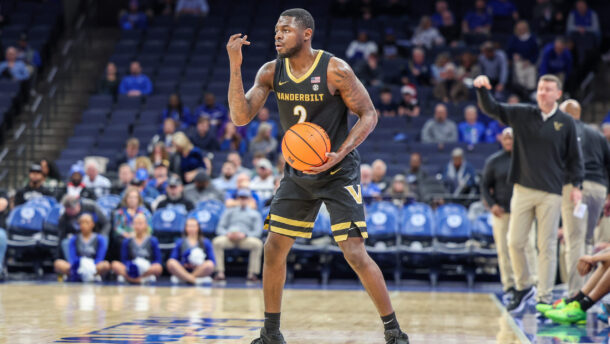
Takeaways from 2023 athletic department budgets: Who does the most with the least in the SEC?
Financial information for the 2023 fiscal year has been finalized at athletic departments from across the country.
This week, analyst Tony Altimore compiled information on athletic department budgets from both public and private universities. Here’s a look at how things break down by conference:
LATEST ATHLETIC DEPT. BUDGETS ?
We're still waiting for the full data downloads from the Dept of Ed, but we can now fill in the private school gaps for a better picture on FY23 finances
Many increases, and much normalization, but the next two years will flip it all on its head pic.twitter.com/FUvhp5l1Mh
— Tony Altimore (@TJAltimore) May 14, 2024
While focusing on major conferences, here are 5 takeaways from this data:
The most-efficient football programs in the SEC, Big Ten and ACC
Using the above data, we can compare teams within each league and see who was the most-efficient at turning athletic department spend into wins on the field.
A couple of important caveats: 1) The above data is for entire athletic department budgets, and does not reflect only funds that were spent on football. However, as Altimore noted in a separate chart, football does generally account for a large portion of total spending within athletic departments. If you’re interested in how athletic department spending impacts performance across all sports, Altimore has you covered there as well. 2). When breaking down cost-per-win, only conference games in 2023 were considered to help account for large discrepancies in nonconference schedule quality.
In the SEC, it should be no surprise that Georgia led the way in cost-per-win after going 8-0 in SEC play last season with an athletics department budget of $186.6 million. The Bulldogs have turned into one of the most consistent performers in the country under Kirby Smart and have done so without a massive expenditure on their athletic department — at least relative to some of their rivals.
Missouri, Ole Miss and Alabama also all performed very well in this metric in 2023. In terms of doing the most with the least, Missouri ($141.6M) and Ole Miss ($150.2M) were the only SEC athletic departments who spent under $180M in FY2023 and then went on to have a record above .500 in SEC play last season.
In the Big Ten, it was Iowa and Northwestern who led the way in terms of cost-per-win. Michigan came in 3rd place after going 9-0 in the Big Ten before eventually winning the national championship. Ohio State led the nation in athletic department expenditures by a significant margin, and largely did not get a great return-on-investment on the gridiron in 2023. The Buckeyes finished 6th in the Big Ten in cost-per-win despite winning 8 league games.
In the ACC, NC State, Louisville and Florida State made up the top-3 in cost-per-win. Virginia Tech and Georgia Tech also graded out well after going 5-3 in ACC play last season with budgets that were in the bottom half of the league. Clemson and Miami, 2 of the ACC’s biggest spenders, combined to win just 7 out of a possible 15 games in 2023.
Calling all Kentucky residents! Looking to sign up with a new sports book? Here’s how you can sign up with bet365 and receive a bet365 Kentucky promo code!
Texas, Oklahoma look right at home in the SEC
In terms of athletic department budget, Texas and Oklahoma seem like they’ll have no problem fitting into the SEC moving forward. Both the Longhorns and Sooners would have been in the top 4 of all SEC programs in athletic department spending in fiscal year 2023 if they had been in the league.
Looking ahead, both UT and OU are set to make significantly more revenue as a result of their SEC membership. The SEC distributed over $51 million per school for 2023, and that number is expected to rise in 2024 as the league begins a new television deal with ESPN. That increased revenue should allow Texas and Oklahoma to spend even more money on football, basketball and other sports in the future.
How much will the Big Ten’s newcomers step up?
The Big Ten’s newcomers have not been nearly as aggressive with their spending historically, with the exception of USC. The Trojans would have ranked 3rd amongst Big Ten programs in athletic department spending in FY2023, behind only Ohio State and Michigan.
However, there’s a big drop-off to the Big Ten’s other new arrivals. Washington, Oregon and UCLA all had athletic department budgets of 150 million or less in FY2023, ranking in the bottom half of the conference.
That’s particularly surprising for Oregon, given that the Ducks have become one of the west coast’s most consistent football programs over the past couple of decades. With this move to the Big Ten, the Ducks will likely need to significantly increase their spending in order to keep up with the likes of Penn State and Wisconsin — let alone Ohio State and Michigan.
Nebraska is doing its best
According to the above data, Nebraska had a bigger athletics budget in 2023 than other much more successful programs such as Georgia, Florida State, Ole Miss and others. While that may be depressing on some level as the Huskers went 5-7 and fell short of bowl eligibility for a 7th straight season (including 2020), there’s reason to be optimistic moving forward.
This kind of spending generally leads to winning over the long haul. Of the 15 programs who had an AD budget of at least $170 million in FY2023, Nebraska is the only one without a 9-win football season in the last 5 years. If the Huskers keep investing at this level, the wins will come.
This offseason, Nebraska has already made serious progress under second-year head coach Matt Rhule. The Huskers signed 5-star quarterback Dylan Raiola out of the class of 2024. If Raiola lives up the hype, with the kind of financial support that is still behind the program, he should be able to bring Nebraska back to national relevance in the coming years.
How much, if any, will Missouri scale-up spending in 2024?
As noted above, Missouri was one of the most-efficient teams in the country in 2023 in terms of converting athletic department spend to results on the football field. Mizzou’s athletic department spent $141.6 million in FY2023 and turned that into its first 11-win season since 2014.
In 2024, the Tigers find themselves in position to build on that excellent campaign from a year ago. Quarterback Brady Cook is back, as are several other top contributors on both sides of the ball. Mizzou also added several elite transfers as well, led by former Oklahoma offensive lineman Cayden Green and ex-Clemson cornerback Toriano Pride Jr.
But if Missouri is going to compete near the top of the SEC on a consistent basis, it will almost certainly have to scale-up its spending. The Tigers were ahead of only Vanderbilt and Mississippi State amongst SEC programs in FY2023.
Spenser is a news editor for Saturday Down South and covers college football across all Saturday Football brands.






